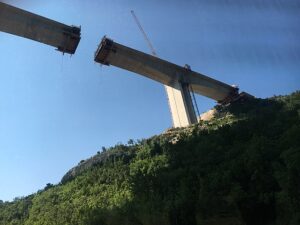Abazović in 2016 (Flickr)
Last Friday night, February 4, saw the end of the ruling coalition in Montenegro. After weeks of political struggle, the National Assembly (81 seats) voted 43-11 in favour of ousting PM Zdravko Krivokapić and his cabinet. It occurs less than two years since Krivokapić’s cabinet replaced the 30-year long spell of Milo Đukanović (DPS). The SDP voted in favour of removing the cabinet.
Compounding disagreements
Several issues alluded to a government collapse. Coalition partners disagreed over several issues, primarily the role of the Serbian Orthodox Church (SOC), the handling of ties with Serbia and Russia, and the stagnant EU accession procedure. Krivokapić’s appeasement of the SOC in Cetinje in September 2021 enraged thousands and caused mass demonstrations. Divisions in the coalition also arose when Krivokapić intended to replace justice minister Leposavić after he denied the Srebrenica genocide.
Krivokapić’s cabinet formed an alliance with the United Reform Action (URA) of Dritan Abazović and Bečić’s Democratic Montenegro (DM). Abazović eventually initiated the no-confidence vote. They formed a awkward cooperation to remove Đukanović in 2020, who had become increasingly unpopular due to alleged corruption, ties with criminal organizations and election fraud. Đukanović was ousted after major protests erupted in the run-up to the 2020 election. For many, his proposal to nationalize property of the SOC was unacceptable.
Future options
For the future, four options seem on the table. Most likely is that a minority government will be formed, as it is rumoured that Abazović wants to cooperate with Đukanović. Allegedly, Abazović can become PM-designate, and Đukanović could support his government without entering cabinet. For the URA, new elections would not be preferable, as they are polling negative. In that regard, the second option would be more preferable to DM, as they are the only former coalition partner to poll positive. It is also indicated that a new technocratic or majority government is possible – however this seems quite unlikely.
Already, protests against Abazović were visible across the country. He allegedly received death threats and a website was launched under the name of ‘treason’ (izdaja). Looking these prospects, it seems that political instability in Montenegro is far from over.
Sources:
Balkan Insight Euronews I Euronews II Euractiv I Euractiv II ABC News
Photo:



